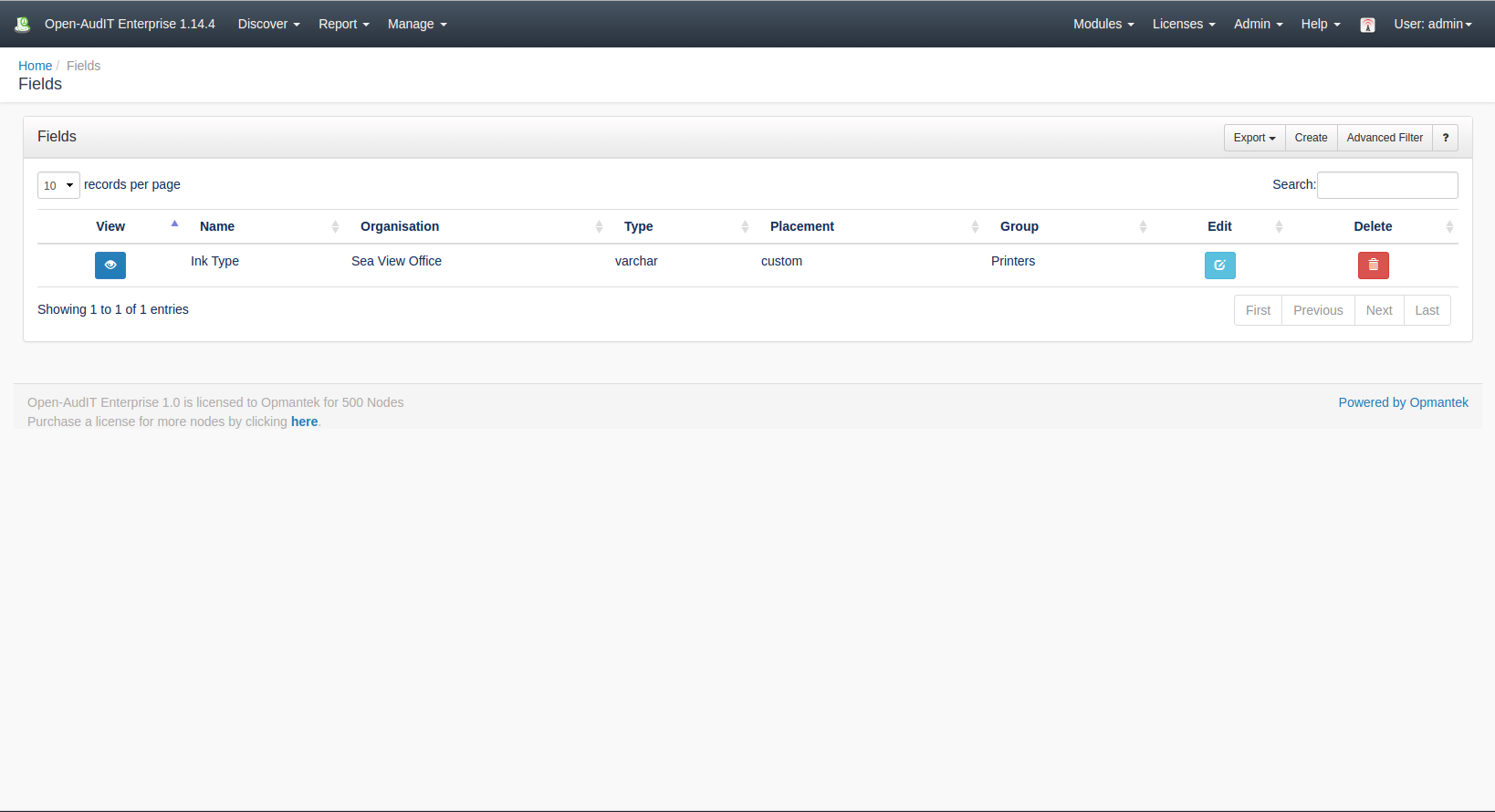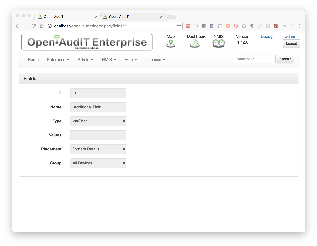| Table of Contents |
|---|
Introduction
...
*(Under Review for V2)
Introduction
Open-AudIT can store information in additional fields that are associated with each device.
...
To make another network go to menu -> Admin : Manage -> Fields -> Create Field.
View Field Details
Go to menu -> Admin : Manage -> Fields -> List Fields.
You will see a list of fields. You can view a field by clicking on the
...
blue view icon. You can also edit or delete
...
your fields.
Database Schema
| Code Block | ||||
|---|---|---|---|---|
| ||||
Create Table: CREATE TABLE `fields` (
`id` int(10) unsigned NOT NULL AUTO_INCREMENT,
`name` varchar(200) NOT NULL DEFAULT '',
`org_id` int(10) unsigned NOT NULL DEFAULT '1',
`group_id` int(10) unsigned NOT NULL DEFAULT '1',
`type` enum('varchar','list') NOT NULL DEFAULT 'varchar',
`values` text NOT NULL,
`placement` enum('custom','system') NOT NULL DEFAULT 'system',
`edited_by` varchar(200) NOT NULL DEFAULT '',
`edited_date` datetime NOT NULL DEFAULT '2000-01-01 00:00:00',
PRIMARY KEY (`id`)
) ENGINE=InnoDB AUTO_INCREMENT=2 DEFAULT CHARSET=utf8; |
Example Database Entry
Field
Fields are stored in the database in the "additional_fieldfields" table. A typical entry will look as below.
id: 3 group_id: 1 name: Additional Field...
| Code Block | ||||
|---|---|---|---|---|
| ||||
id: 1 name: Ink Type org_id: 2 group_id: 8 type: varchar |
...
values: |
...
placement: |
...
custom
edited_by: Administrator
edited_date: 2017-05-22 00:26:38 |
API / Web Access?
You can access the /fields collection using the normal Open-AudIT JSON based API. Just like any other collection. Please see the API documentation for further details.
...





